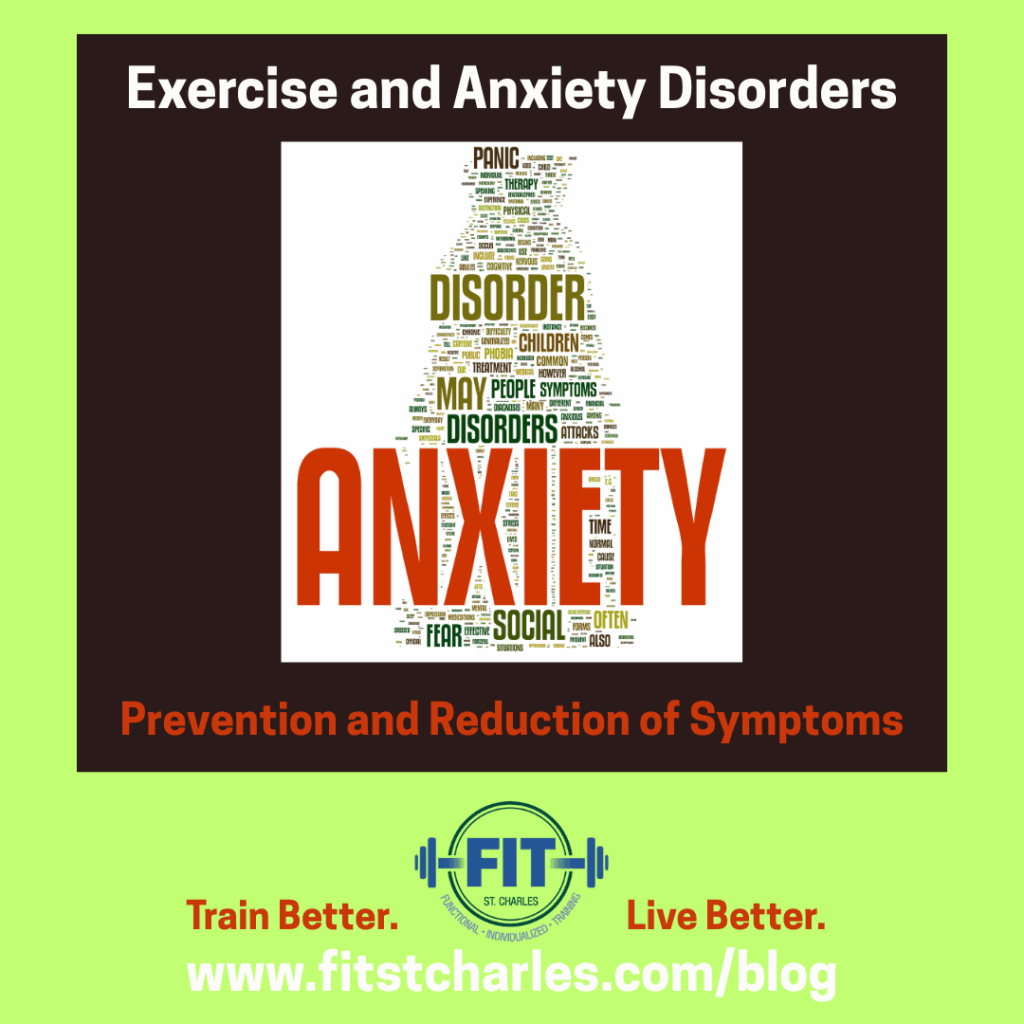
Not everyone who experiences anxiety has or will develop an anxiety disorder. Some anxiety is a regular part of life. Our response to stimuli that create anxiety helps us pay attention to potential danger and keeps us alert. However, for an estimated 11% of people worldwide who are diagnosed with an anxiety disorder, anxiety is often without an identifiable cause and creates mild to severe disruptions in their lives. It is also the fourth leading cause of disability in adults. Unfortunately, anxiety disorders often lead to other mental disorders, such as depression, which causes further disruptions. Although exercise is known to reduce anxiety, individuals suffering from it are frequently the most sedentary. In addition, anxiety and lack of exercise are known causes of other health issues, such as cardiovascular problems and diabetes, and lack of exercise also increases the likelihood of developing health issues, creating compounding factors. We also know that lower levels of physical activity increase depression symptoms, and depression decreases motivation for physical activity, so it makes sense that it can become a cycle that is hard to escape. If you’ve been diagnosed with an anxiety disorder, it is important to know how and why exercise helps reduce and prevent symptoms associated with anxiety disorders.
Exercise, especially when done consistently, increases self-efficacy (one’s belief that they can create change in their own lives) in individuals (regardless of their mental state). Engaging in exercise builds up the physical and mental resources that create resilience, both in your body and mind, and allows you to tackle problems with more confidence, lowering daily background anxiety and anxiety when presented with a difficult task or life challenge. Exercise also helps us control our amygdala, which is responsible for the “fight or flight” response (among other things), which is more often triggered in individuals with an anxiety disorder, regardless of whether or not the stimuli for the response pose a risk of actual harm. This can lead to frustration, increased anxiety, and even panic attacks. Being able to more easily control the “fight or flight” response significantly decreases the chance of it being triggered and the duration of the reaction when it is. Basically, regular exercise helps you self-regulate your emotions and responses to stimuli, which are important in controlling anxiety symptoms and bolstering self-efficacy.
The short-term effects of exercise and anxiety shouldn’t be ignored either! Of course, engaging in activities that take your mind off what you are anxious about (if there is a known cause) is helpful, but there is more to it than that. Anxiety is also stored in your body, not just your brain, and creates a feedback loop: the more tense your body, the more tense your brain, and vice versa. Fortunately, exercise decreases the tension in your muscles, which can help you feel less anxious! Increasing your heart rate also changes your brain chemistry. It increases the availability of serotonin, GABA, BDNF (brain-derived neurotrophic factor), and endocannabinoids, which are all responsible for reducing anxiety. So both in the long-term and short-term, exercise reduces symptoms of anxiety disorders (and also just daily anxiety in those who are not diagnosed with an anxiety disorder) in several ways!
Exercise has been proven to be the single best non-medical treatment and prevention for anxiety, yet those with anxiety often have a hard time adding exercise to their routines. Whether that is because of low self-efficacy, low motivation, depressive symptoms, or lack of desire to exercise, starting slow can help ease you into a healthier life with fewer anxiety symptoms (which then helps you continue to be motivated to exercise!). Although high-intensity training has been found to be the best form of exercise to reduce and prevent anxiety, it can seem like a tall order for those who are already experiencing high levels of anxiety and low levels of motivation. Fortunately, even a brisk walk, dancing around, or a bike ride are sufficient in reducing anxiety symptoms, and is a great way to work your way up to adding more intense and longer workouts! After one good workout, you’ll start to see the immediate effects that exercise can have on anxiety, and then the longer you stick with it, the more likely you are to have symptom reduction and prevent anxiety in the first place!
